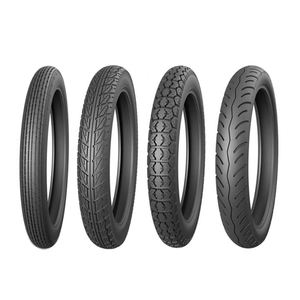Motorcycle Boots Things To Know Before You Get This
Table of ContentsNot known Facts About Motorcycle BootsMotorcycle Boots - TruthsAbout Motorcycle BootsSome Known Details About Motorcycle Boots The smart Trick of Motorcycle Boots That Nobody is DiscussingThe Main Principles Of Motorcycle Boots
The key parts of contemporary bikes are provided listed below.; this has been used all with motorcycle background but is now coming to be a lot more common.It was widely out of favor and generally concerned as a poor concept at the time. It has because gotten some prestige in the modern-day custom bike world as well due to the fact that of the space cost savings it can manage and the referral to an earlier era.
Any kind of storage space container for gas might be so called, the term is typically applied to part of an engine system in which the gas is saved and thrust (gas pump) or launched (pressurized gas) right into an engine. A bike fork is the section of a bike that holds the front wheel and enables one to steer.
About Motorcycle Boots
The mix of rake and route identifies just how steady the motorcycle is. motorcycle boots. The 'fork' on a motorbike includes multiple parts. The triple trees (also referred to as yokes) hold the fork tubes (which consist of the fork springs), and are fastened to the neck of the frame by the guiding stem.

Motorbikes have primarily, however not exclusively, been produced with one to 4 cyndrical tubes, and developers have actually tried virtually every imaginable design. The most usual engine configurations today are the solitary and twin, the V-twin, the opposed twin (or fighter), and the in-line three-way and in-line 4. A variety of others styles have reached automation, consisting of the V-4, the level 6-cylinder, the level 4-cylinder, the in-line 6-cylinder, and the Wankel engine.
Fascination About Motorcycle Boots
Chain-drive uses gears and a roller chain, which requires both lubrication and adjustment for prolongation (stretch) that takes place with wear. The lubricant goes through being shaken off the fast-moving chain and results in gunk and dirt build-up. Chains do wear away, and too much wear on the front and back sprockets can be harmful.
Conventional roller chain-drives suffer the possibility for vibration, as the efficient radius of activity in a chain and sprocket combination frequently changes throughout the change ("chordal action"). If a drive sprocket turns at constant RPM, after that the chain (and the driven sprocket) should increase and decelerate frequently. Most chain-driven motorcycles are fitted with a rubber bushed back wheel center to eliminate this resonance issue.
These chain oilers differ in elegance, yet all include significantly to the life of the chain. The personalized of lubing by immersing the chain in a tin Click Here of warm oil discontinued in the early 1970s, when most chains had rubber "O'-rings. The original Suzuki RE5 of 1975 came with a back chain oiler, but the 1976 version had a closed chain, and its oiler was erased as "unnecessary".
The Best Guide To Motorcycle Boots
They are not as long lasting when subjected to high check that horsepower as a chain. You can not change the size and modification last drive ratios as conveniently as chains. And require bigger pulleys compared to chain sprockets to obtain an effective last drive proportion.
Inside the bell real estate a bevel gear on the shaft mates with an additional on the wheel mount. This plan is premium in terms of noise and cleanliness and is practically maintenance-free, with the exception of occasional fluid modifications.
The added equipment sets are a resource of power loss and included weight. Practically all high-performance auto racing bikes use chain-drive due to the fact that they are the most mechanically reliable transferring power to the back wheel.

Fascination About Motorcycle Boots
There are tires made for dirt bikes, touring, sport and cruiser bikes. Dirt bike tires have knobbly, deep treads for optimum grasp on loose dust, mud, or gravel; such tires often tend to be less stable and noisier on paved surface areas.
Touring tires are typically made of a harder rubber compound for greater resilience, these might last longer but have a tendency to give much less outright grasp contrasted to sporting activities tires at ideal operating temperature levels. Touring tires usually provide more grasp at reduced temperature levels and can be much more matched to riding in chilly or winter months problems where a sport tire might never reach its optimal operating temperature level.
These tend to have stronger sidewalls as they are commonly fitted to much heavier machines. Motorsport or racing tires use the highest possible of degrees of grasp. As a result of the heats at which these tires commonly run, utilize outside a racing atmosphere is hazardous, generally these tires do not reach their optimum temperature which provides much less than optimum hold.
The Buzz on Motorcycle Boots

This can result in brake dive. Brakes can either be drum or disc based, with disc brakes being much more typical sites on big, contemporary or much more expensive bikes for their much remarkable stopping power, particularly in damp conditions. There are numerous brake-performance-enhancing aftermarket components readily available for a lot of motorcycles, including brake pads of differing compounds and steel-braided brake lines.